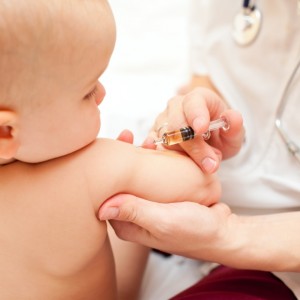 Experts have long believed that when the risk of a disease is high, people are more likely to accept a vaccine to prevent that disease. But recent research suggests that might not be uniformly true. Dr. Elizabeth Wolf, an investigator in Seattle Children’s Research Institute’s Center for Child Health, Behavior and Development, led a study that determined Washington’s recent pertussis (whooping cough) epidemic did not influence the number of infants who were vaccinated against the disease.
Experts have long believed that when the risk of a disease is high, people are more likely to accept a vaccine to prevent that disease. But recent research suggests that might not be uniformly true. Dr. Elizabeth Wolf, an investigator in Seattle Children’s Research Institute’s Center for Child Health, Behavior and Development, led a study that determined Washington’s recent pertussis (whooping cough) epidemic did not influence the number of infants who were vaccinated against the disease.
Pertussis is an extremely contagious bacterial disease that can lead to pneumonia, seizures, brain damage and death. In 2012, the United States experienced the largest pertussis epidemic since the 1950s. There were 20 deaths reported nationally, the majority of which were infants. Washington reported one of the highest incidence rates of pertussis. The state also has one of the highest nonmedical vaccination exemption rates from required kindergarten vaccinations.
“Vaccination rates are below public health goals, both locally and nationally,” Wolf said. “We need to better understand what factors might impact vaccine acceptance.”
To test the hypothesis that epidemics lead to an increase in vaccination rates, Wolf and her colleagues compared the proportion of Washington infants who were up-to-date with a diphtheria, tetanus and pertussis vaccine (DTap) before, during and after the epidemic. Their study, titled “Impact of Pertussis Epidemic on Infant Vaccination in Washington State” and published in Pediatrics, found no significant increase in vaccination rates statewide comparing time points before and during or after the epidemic. Of the 121,000 infants studied, aged 3 to 8 months, 67.4% were vaccinated before the outbreak, 69.5% during the outbreak and 67.6% after the outbreak. The difference was statistically insignificant, Wolf said.
Researchers don’t know why vaccination rates remained stagnant, but Wolf said fear of vaccine-related adverse affects may have remained more influential on parents’ decision making than the fear of disease, a phenomenon observed during the 2009 H1N1 influenza epidemic.
“DTap is a well-established vaccine with few side effects, but parents might have generalized concerns about the vaccines safety stemming from earlier pertussis vaccines,” Wolf said. “Still, the risk of being infected with pertussis far outweighs any risk from the vaccine.”
While little change was seen in vaccination rates statewide, some counties experienced significant increases or decreases with Washington’s pertussis epidemic. Wolf hopes to do further research to discover the factors that influenced vaccination rates in various counties.

